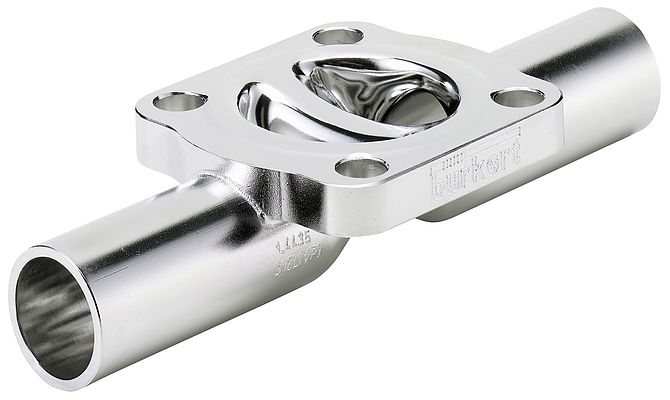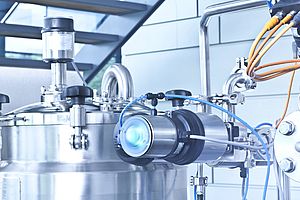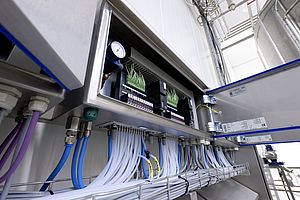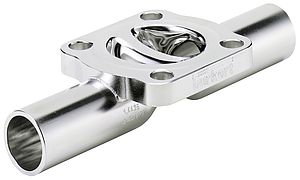Bürkert Fluid Control Systems' latest version of its diaphragm valve body has been manufactured using hydroforming technology to deliver a number of benefits. The new tube valve body meets the latest standards for pharmaceutical, cosmetic as well as food and beverage industries and was designed for use in hygienic process applications.
Fluid control systems within hygienic applications demand high standards in terms of clean ability which can be affected by a number of design characteristics. The base material is normally 316L stainless steel which requires an excellent surface finish in order to maximise the efficiency of the clean-in-place (CIP) process that is used to sterilise the process pipework. Coupled with excellent thermal properties, the design of process valves has become a complex process.
Bürkert has delivered the next evolution of valve manufacture by patenting a new procedure to create process valves using hydroforming technology. This has significantly reduced the amount of material used as well as allowing uniformly high quality laser welds that do not add any further material to the component.
The process starts with the flange, which is laser cut and milled, and the tube, both of which are from 316L stainless steel. The tube is placed in a mould, filled with a water-oil emulsion and subjected to around 3,000 bars of pressure to produce the required flow path to and from the weir.
The flange and tube are then laser welded together before the new component is annealed in order to relieve residual stress within the material. This heat treatment process also increases the durability of the material by improving corrosion resistance. This is enhanced by precision machining of the surfaces of the flange before the final polishing stages are completed.
Ian Webster, Hygienic Processing Segment Manager at Bürkert UK, comments: "This new manufacturing process allows us to manufacture variants that are as much as 75% lighter than forged housings. The reduced volume of material means that the energy requirement for both heating and cooling during cleaning processes is also greatly reduced.
The innovative manufacturing technique employed by Bürkert also has a greatly reduced carbon footprint, making it more environmentally friendly. An independent study showed that when manufacturing a DN25 cast valve body, almost 7,000 grams of CO2 were produced, compared to the hydro formed valve body which only generates 2,000 grams.
The new tube valve body can be used with EPDM or PTFE diaphragms, both of which have excellent hygiene and chemical resistance qualities, and coupled with Type 2031 CLASSIC pneumatic actuator or a Type 3233 manual actuator to deliver process control solutions for any number of hygienic applications. Initially, the valve tube bodies will be available in ½, ¾, 1, 1½ and 2 inch variants, suitable for welded connections.


























